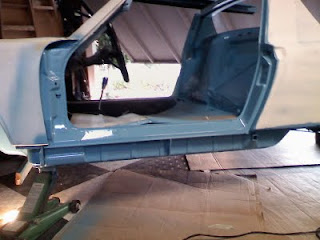
Restoring a 35 year old car is not for the faint of heart. Today after being more of an observer than a participator, I decided to start posting my progress in converting a Porsche 914 to an electric vehicle. Tim, Ross and Peter thanks for sharing your knowledge, trials and tribulations.
For the last year most of my work has involved more restoration than EV conversion. My goal with the restoration has been to make the car as light and efficient as possible. To achieve that goal, I have done and will do the following:
1. Use fiberglass front and rear bumpers.
2. Use fiberglass front and rear hoods and fiberglass running boards.
3. remove the headlight motors that raise and lower the headlights and replace with an air shock system. My inspiration for this came from this post (Porsche 914-6 GT Mechanical Headlight Raisers).
4 strip the interior to the bare minimum.
5. remove the windshield wiper motor and replace with a hand crank of my design. (no electricity wasted here)
6. Use air shox (that's how Camp914 spells it) for the front and rear hoods instead of the hood springs used on the 914.
7. Use Lithium Iron Phosphate batteries in the conversion 36 200amphr batteries. (476 lbs)
8. Go with a light flywheel. (It's currently with the machinist.)
9. Use an AC Electric Motor by High Performance Golf cars. 52 HP Max.
To minimize rolling resistance, I have had all the wheel bearings replaced.
I have had the bushings all replaced.
I added an adjustable proportional valve (JWest Engineering) to the brake system and had the brake calipers all rebuilt.
I also added a new fuse box with blade fuses (JWest engineering).
I also did some rust repair and body work plus I painted the car myself to save money for my batteries (the big expense).
I know I'm a bit light on the details, but I will post pictures at a later date.


















































